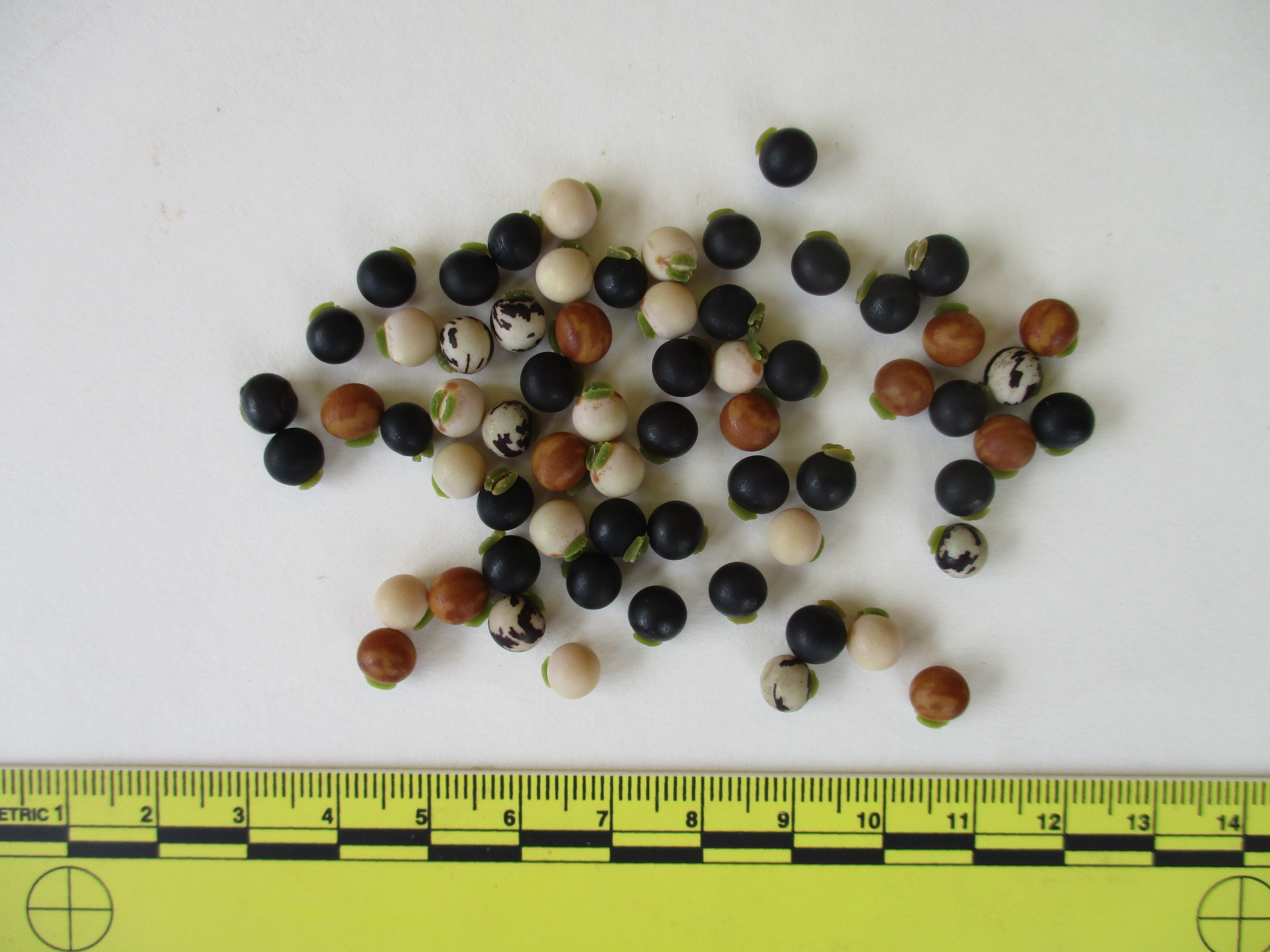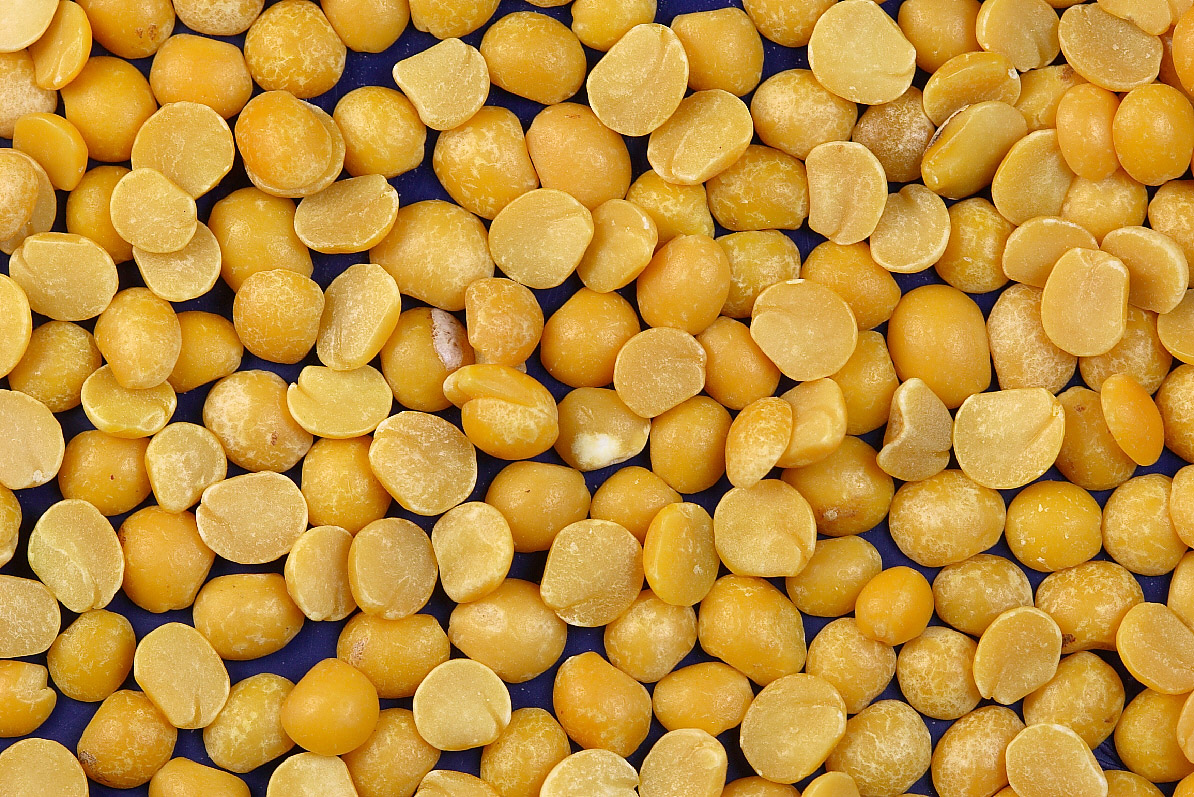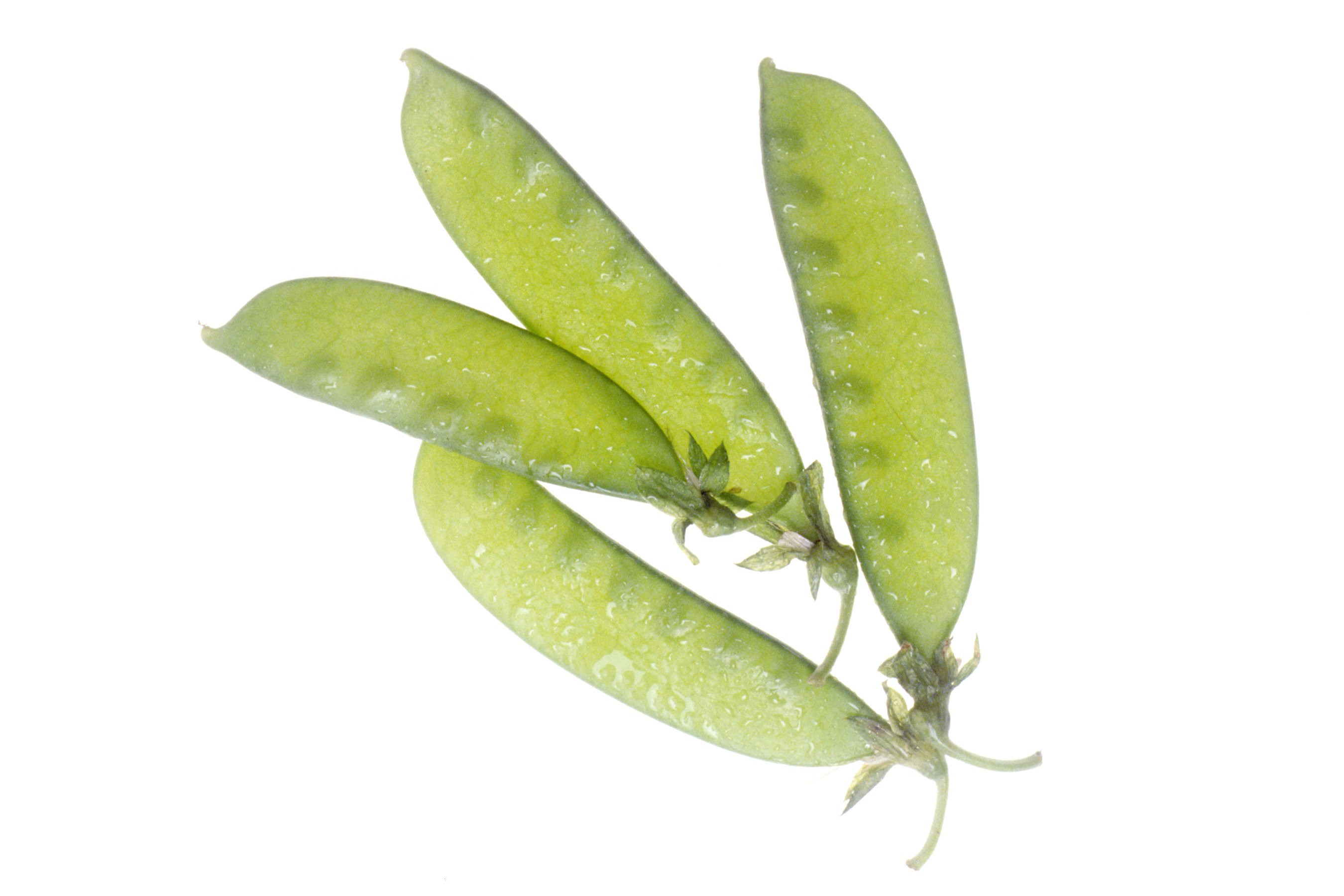|
Pea
Pea (''pisum'' in Latin) is a pulse or fodder crop, but the word often refers to the seed or sometimes the pod of this flowering plant species. Peas are eaten as a vegetable. Carl Linnaeus gave the species the scientific name ''Pisum sativum'' in 1753 (meaning cultivated pea). Some sources now treat it as ''Lathyrus oleraceus''; however the need and justification for the change is disputed. Each pod contains several seeds (peas), which can have green or yellow cotyledons when mature. Botanically, pea pods are fruit, since they contain seeds and develop from the ovary of a "pea" flower. The name is also used to describe other edible seeds from the Fabaceae such as the pigeon pea (''Cajanus cajan''), the cowpea (''Vigna unguiculata''), the seeds from several species of ''Lathyrus'' and is used as a compound form - for instance, in Sturt's desert pea. Peas are annual plants, with a life cycle of one year. They are a cool-season crop grown in many parts of the world; planting c ... [...More Info...] [...Related Items...] OR: [Wikipedia] [Google] [Baidu] |
Cowpea
The cowpea (''Vigna unguiculata'') is an annual herbaceous legume from the genus '' Vigna''. Its tolerance for sandy soil and low rainfall have made it an important crop in the semiarid regions across Africa and Asia. It requires very few inputs, as the plant's root nodules are able to fix atmospheric nitrogen, making it a valuable crop for resource-poor farmers and well-suited to intercropping with other crops. The whole plant is used as forage for animals, with its use as cattle feed likely responsible for its name. Four subspecies of cowpeas are recognised, of which three are cultivated. A high level of morphological diversity is found within the species with large variations in the size, shape, and structure of the plant. Cowpeas can be erect, semierect ( trailing), or climbing. The crop is mainly grown for its seeds, which are high in protein, although the leaves and immature seed pods can also be consumed. Cowpeas were domesticated in Africa and are one of the olde ... [...More Info...] [...Related Items...] OR: [Wikipedia] [Google] [Baidu] |
Pigeon Pea
The pigeon pea (''Cajanus cajan'') or toor dal is a perennial legume from the family (biology), family Fabaceae native to the Eastern Hemisphere. The pigeon pea is widely cultivated in tropical and semitropical regions around the world, being commonly consumed in South Asia, Southeast Asia, Africa, Latin America and the Caribbean. Etymology and other names Scientific epithet The scientific name for the genus ''Cajanus'' and the species ''cajan'' derive from the Malay language, Malay word ''katjang'' (modern spelling: kacang) meaning legume in reference to the bean of the plant. Common English names In English language, English they are commonly referred to as pigeon pea which originates from the historical utilization of the pulse as Columbidae, pigeon fodder in Barbados. The term Congo pea and Angola pea developed due to the presence of its cultivation in Africa and the association of its utilization with those of African descent. The names no-eye pea and red gram both refer t ... [...More Info...] [...Related Items...] OR: [Wikipedia] [Google] [Baidu] |
Pea Soup
Pea soup or split pea soup is soup made typically from dried peas, such as the split pea. It is, with variations, a part of the cuisine of many cultures. It is most often greyish-green or yellow in color depending on the regional variety of peas used; all are cultivars of ''Pisum sativum''. History Pea soup has been eaten since Classical antiquity, antiquity; it is mentioned in Aristophanes' ''The Birds (play), The Birds'', and according to one source "the Greeks and Romans were cultivating this legume about 500 BC to 400 BC. During that era, vendors in the streets of Athens were selling hot pea soup." Eating fresh "garden" peas before they were matured was a luxurious innovation of the Early modern period, Early Modern period: by contrast with the coarse, traditional peasant fare of pease pottage (or Pease pudding, pease porridge), ''Potage Saint-Germain'', made of fresh peas and other fresh greens braised in light stock and puréed, was an innovation sufficiently refined that ... [...More Info...] [...Related Items...] OR: [Wikipedia] [Google] [Baidu] |
Lathyrus
''Lathyrus'' is a genus of flowering plants in the legume family Fabaceae, and contains approximately 160 species. Commonly known as peavines or vetchlings, they are native to temperate areas, with a breakdown of 52 species in Europe, 30 species in North America, 78 in Asia, 24 in tropical East Africa, and 24 in temperate South America. There are annual and perennial species which may be climbing or bushy. This genus has numerous sections, including ''Orobus'', which was once a separate genus. The genus has numerous synonyms, including ''Pisum'', the ancient Latin name for the pea.Gledhill, David (2008). "The Names of Plants". Cambridge University Press. (hardback), (paperback). pp 304 Species 181 species are currently accepted.GRIN Species Records of ''Lathyrus''. Germplasm Resources In ... [...More Info...] [...Related Items...] OR: [Wikipedia] [Google] [Baidu] |
Medieval Cuisine
Medieval cuisine includes foods, eating habits, and cooking methods of various Culture of Europe, European cultures during the Middle Ages, which lasted from the 5th to the 15th century. During this period, Diet (nutrition), diets and cooking changed less than they did in the early modern period that followed, when those changes helped lay the foundations for modern European cuisines. Cereals remained the most important staple during the Early Middle Ages as rice was introduced to Europe late, with the potato first used in the 16th century, and much later for the wider population. Barley, oats, and rye were eaten by the poor while wheat was generally more expensive. These were consumed as bread, porridge, gruel, and pasta by people of all classes. Cheese, fruits, and vegetables were important supplements for the lower orders while meat was more expensive and generally more prestigious. Game (food), Game, a form of meat acquired from hunting, was common only on the nobility's tabl ... [...More Info...] [...Related Items...] OR: [Wikipedia] [Google] [Baidu] |
Snap Pea
The snap pea, also known as the sugar snap pea, is an edible-pod pea with rounded pods and thick pod walls, in contrast to snow pea pods, which are flat with thin walls. The name mangetout ( French for "eat all") can apply to snap peas and snow peas. A snap pea named "butter pea" was described in French literature in the 19th century, but the old snap pea was lost in cultivation by the mid-20th century. The present snap pea originated from Calvin Lamborn's cross between a shelling pea mutant found in 1952 by Dr. M.C. Parker and a snow pea cultivar. Researchers at Twin Falls, Idaho hoped that the cross might counteract twisting and buckling seen in varieties at the time. With this cross, snap pea was recreated and the first new snap pea was released in 1979 under the name 'Sugar Snap'. Snap peas, like all other peas, are pod fruits. An edible-podded pea is similar to a garden, or English, pea, but the pod is less fibrous, and is edible when young. Pods of the edible-podded pea, ... [...More Info...] [...Related Items...] OR: [Wikipedia] [Google] [Baidu] |
Pease Porridge
Pease pudding, also known as pease porridge, is a savoury pudding dish made of boiled legumes, typically Split pea, split yellow peas, with water, salt and spices, and often cooked with a bacon or ham joint. A common dish in the North-East Of England, north-east of England, it is consumed to a lesser extent in the rest of Britain. In Newfoundland, it retains its traditional name as part of the customary Jiggs dinner. In non-English speaking countries, similar dishes exist under different names. Dish Pease pudding is typically thick, somewhat similar in texture to (but perhaps a little more solid than) hummus, and is light yellow in colour, with a mild taste. Pease pudding is traditionally produced in England, especially in the industrial North East England, North Eastern areas including South Shields, and on down to Darlington on the North Yorkshire, North Yorkshire border. It is often served with ham or bacon, beetroot and stottie cakes. It is also a key ingredient in the clas ... [...More Info...] [...Related Items...] OR: [Wikipedia] [Google] [Baidu] |
Split Pea
Split peas are an agricultural or culinary preparation consisting of the dried, peeled and split seeds of '' Pisum sativum'', the pea. Harvesting The peas are spherical when harvested, with an outer skin. The peas are dried and the dull-coloured outer skin of the pea removed, then split in half by hand or by machine at the natural split in the seed's cotyledon. There are green and yellow varieties of split pea. Gregor Mendel studied the inheritance of seed colour in peas; the green phenotype is recessive to the yellow one. Traditionally, the genotype of purebred yellow is "YY" and that of green is "yy", and hybrids of the two, "Yy", have a yellow (dominant) phenotype. Split peas are high in protein and low in fat, with 25 grams of protein and one gram of fat per serving. Most of the calories come from protein and complex carbohydrates. The split pea is known to be a natural food source that contains some of the highest amounts of dietary fibre, containing 26 grams of fibr ... [...More Info...] [...Related Items...] OR: [Wikipedia] [Google] [Baidu] |
Snow Pea
The snow pea is an edible-pod pea with flat pods and thin pod walls, in contrast to snap pea pods, which are round with thick walls. It is eaten whole, with both the seeds and the pod, while still unripened. Names The common name snow pea seems to be a misnomer as the planting season of this pea is no earlier than that of other peas. Another common name, Chinese pea, is probably related to its prominence in Chinese dishes served in the West. It is called ''mangetout'' in the United Kingdom and Ireland (from the French for "eat-all" and pronounced monge-too; ). Snow peas and snap peas both belong to Macrocarpon Group, a cultivar group based on the variety ''Pisum sativum'' var. ''macrocarpum'' Ser. named in 1825. It was described as having very compressed non-leathery edible pods in the original publication. The scientific name ''Pisum sativum'' var. ''saccharatum'' Ser. is often misused for snow peas. The variety under this name was described as having sub-leathery an ... [...More Info...] [...Related Items...] OR: [Wikipedia] [Google] [Baidu] |
Swainsona Formosa
''Swainsona formosa'', commonly known as Sturt's desert pea or Sturt pea, is a species of flowering plant in the family Fabaceae and is native to all continental states and the Northern Territory of Australia, with the exception of Victoria. It is a prostrate annual or short lived perennial herb with imparipinnate leaves with about 15 elliptic to egg-shaped leaflets with the narrower end towards the base, and racemes of usually red flowers in racemes of 2 to 6. Description ''Swainsona formosa'' is a prostrate annual or short lived perennial herb, with several densely softly-hairy stems mostly wide. The leaves are mostly long with about 15 elliptic to egg-shaped leaflets long and wide, the end leaflet slightly longer. There are broad, densely hairy stipules, sometimes or more at the base of the petiole. The flowers are borne in racemes about long with 2 to 6 usually red flowers, sometimes white or other colours, on a peduncle long, each flower on a shaggy-hairy pedice ... [...More Info...] [...Related Items...] OR: [Wikipedia] [Google] [Baidu] |
Early Modern European Cuisine
The cuisine of early modern Europe (c. 1500–1800) was a mix of dishes inherited from medieval cuisine combined with innovations that would persist in the modern era. The discovery of the New World, the establishment of new trade routes with Asia and increased foreign influences from sub-Saharan Africa and the Middle East meant that Europeans became familiarized with a multitude of new foodstuffs. Spices that previously had been prohibitively expensive luxuries, such as pepper, cinnamon, cloves, nutmeg, and ginger, soon became available to the majority population, and the introduction of new plants coming from the New World and India like maize, potato, sweet potato, chili pepper, cocoa, vanilla, tomato, coffee, and tea transformed European cuisine forever. Though there was a great influx of new ideas, an increase in foreign trade and a Scientific Revolution, preservation of foods remained traditional: preserved by drying, salting, and smoking or pickling in vinegar. Fare was ... [...More Info...] [...Related Items...] OR: [Wikipedia] [Google] [Baidu] |








